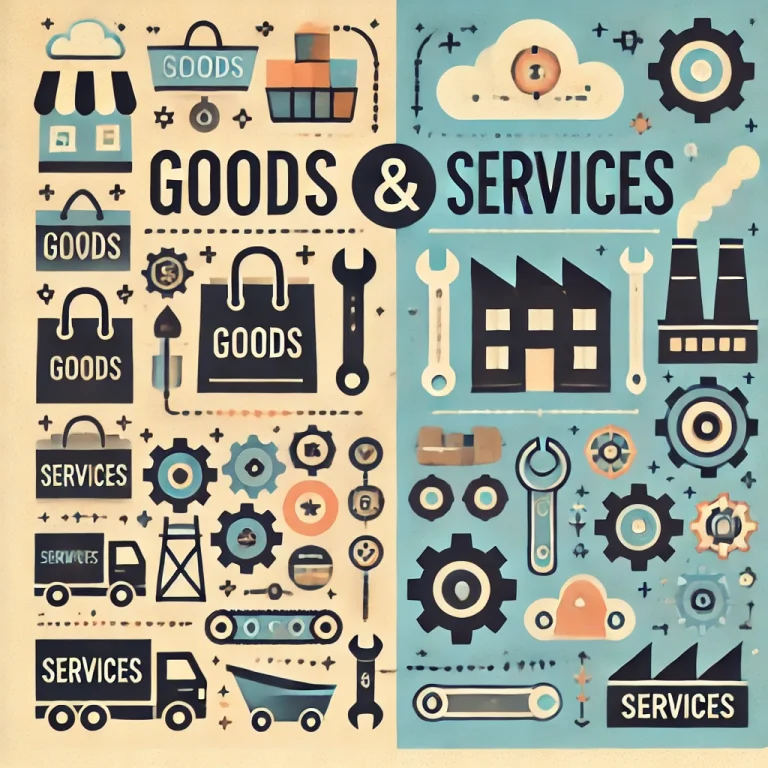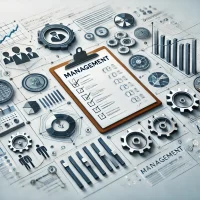Goods and services form the backbone of commerce, which are the basic instruments of trade and economic activity in the world. Goods are tangible products, while services are intangible activities. Though both are meant for customer satisfaction, it is the differences between goods and services that help businesses’ concerns to improve their performance. This article deals with the differences and similarities between goods and services, including definitions, key advantages, and an overview in tabular and graphical form for easy understanding.
Goods vs Services: Key Differences
The former is the tangible commodity or commodity good, which the consumer will look at, touch, and keep. Whereas the latter can be regarded as an act or service that one entity performs to the advantage of another. A summary of the main differences between goods and services appears in the table below.
| Aspect | Goods | Services |
|---|---|---|
| Tangibility | Tangible; physical form | Intangible; cannot be touched |
| Storability | Can be stored for future use | Cannot be stored; produced and consumed simultaneously |
| Ownership Transfer | Ownership is transferred upon purchase | No ownership transfer; customer buys access or experience |
| Production Process | Involves manufacturing and quality control | Delivered by individuals; quality may vary |
| Standardization | Standardized products across different units | Customized to meet individual customer needs |
| Inventory | Goods can be stocked in inventory | No inventory; service exists only when delivered |
What is Goods?
Goods represent all the tangible things created to be sold or for own consumption, such as electronic appliances and groceries. Two primary categories of goods include consumer goods, like food and clothing, and capital goods, which refer to machines. Goods involve a series of production activities, which include manufacturing, quality checks, and distribution. Goods are measurable, storable, and easily standardized, which makes them mass-produced with reliability.
Advantages of Goods
- Durability: Goods are long-lasting, especially capital goods like machinery and furniture, providing extended usability.
- Measurability: The quality, quantity, and price of goods are measurable, enabling easier quality control and standardization.
- Inventory Storage: Companies can stock goods, making them readily available for immediate sale, ensuring a continuous supply for customers.
- Ownership Transfer: Upon purchase, ownership of goods transfers to the buyer, providing a sense of possession and value.
What is Services?
Services are intangible actions or benefits provided by one entity to another often involving skills or expertise. Services include activities such as banking, healthcare, and education. Professionals provide their skills and knowledge to fulfill customer needs. Services are produced and consumed at the same time thus creating a personalized experience for customers.
Advantages of Services
- Customization: Services can be tailored to meet individual needs, enhancing customer satisfaction and loyalty.
- High Interaction Level: The nature of services often requires direct interaction, fostering trust and relationship-building.
- Adaptability: Unlike goods, services can be adjusted in real-time to accommodate client feedback, improving service quality.
- No Storage Costs: As services do not require inventory, businesses avoid storage and maintenance costs.
Similarities Between Goods and Services
Despite their differences, goods, and services share several similarities, especially in their ultimate goal of satisfying customer needs:
- Customer-Centric: Both goods and services aim to provide solutions that fulfill customer demands.
- Economic Value: They contribute to the economy, creating revenue and employment opportunities.
- Market-Driven Pricing: Both are influenced by supply and demand, market trends, and consumer preferences.
- Quality Control: Whether it’s a product or service, quality control is crucial to maintaining brand reputation and customer trust.
Although goods and services play the same role, that is the fulfillment of the consumer’s demand, they vary greatly in being tangible, having storage, and how they are prepared. Goods are tangible since they have an existence that can be owned and hence can be stored physically as well. On the contrary, services are momentary as well as existent by experience. Such differences found, that companies can refine and adjust their marketing, manufacturing, and customer services based on these differences so they can better serve customers. This way, the development becomes sustainable and business thrives and results in customer satisfaction.
Goods and Services FAQs
Can services be considered a type of product?
Yes, services are often viewed as products since they fulfill consumer needs, though they differ in being intangible and non-storable.
What are examples of goods and services?
Examples of goods include furniture, electronics, and clothing, whereas services include banking, education, and healthcare.
Do goods and services both involve ownership transfer?
Goods involve ownership transfer, while services do not; instead, they offer an experience or benefit.
Are there any tax differences between goods and services?
Yes, taxation often varies; goods typically incur sales taxes, whereas services may have service-specific taxes depending on the jurisdiction.
What are ‘similarities between goods and services’?
Both aim to fulfill customer needs, contribute economically, and require quality control for customer satisfaction.


